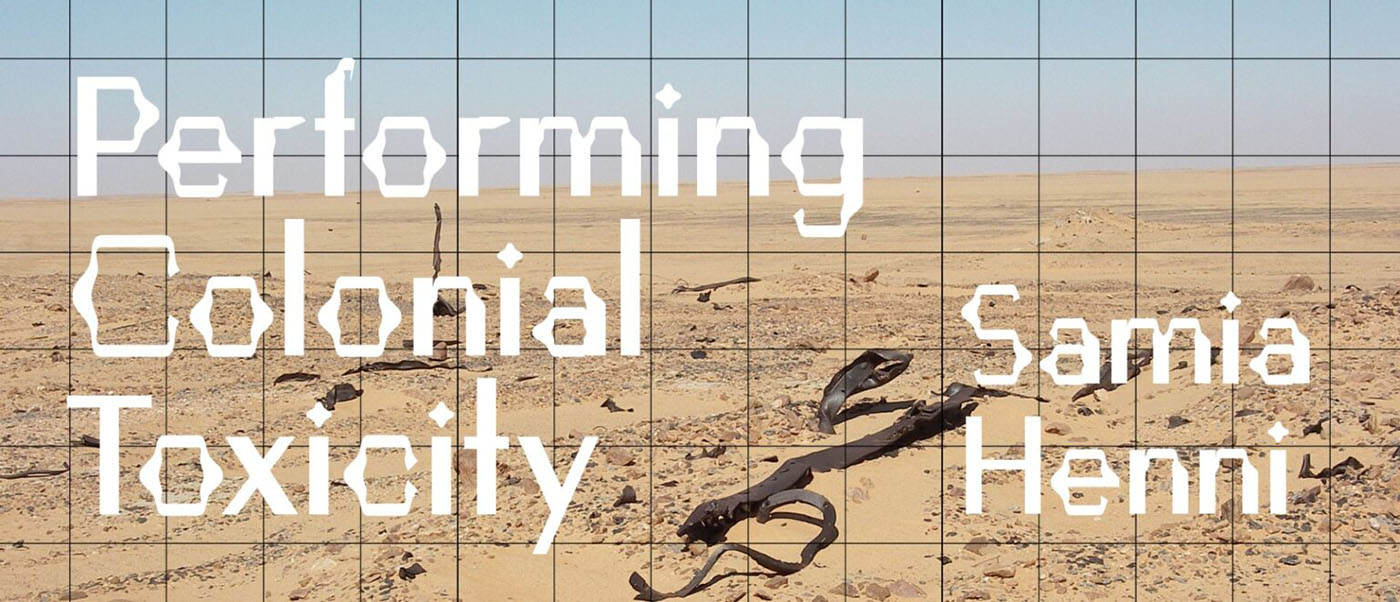TMR World Picks are selected by our editors. We welcome your suggestions: editor@themarkaz.org.
TMR
Mohamed Gohar, The Alexandrian, an exhibition
March 23 — April 15, Janaklees Visual Art, Alexandria, Egypt—more info
From NEOM along Saudi Arabia’s northern stretch of the Red Sea to El-Alamein City on Egypt’s Mediterranean shore, deserts and coastlines are being bulldozed and repurposed in Arab countries — both those that can afford it, and those who cannot. Some government planning decisions, quickly implemented by multinational architects, urban planners and developers, have been taken for prestige and rebranding, other times for economic reasons — more often under veiled promises of sustainability.
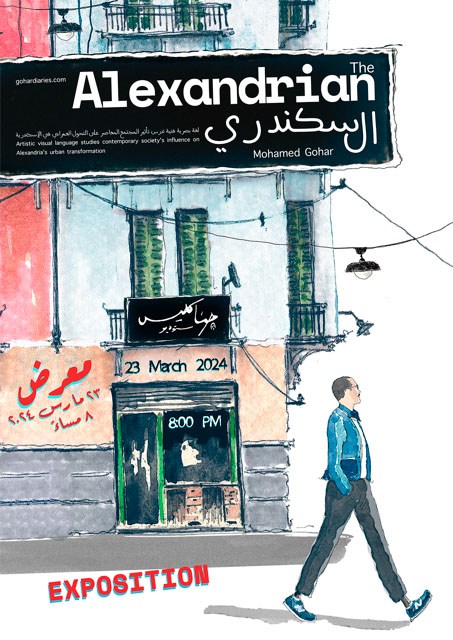
However, beyond the corporate boardrooms and ambitious blueprints, ordinary people in MENA cities share a lived experience, one that is too easily obscured or dwarfed by mega construction projects. It is this experience of the everyday which the exhibition The Alexandrian explores. Egyptian architect, researcher and artist Mohamed Gohar goes beneath the glitz of the mega-new-build to start a dialogue with ordinary Alexandrians about their city spaces.
Initially his research on Alexandria’s cultural heritage emphasized a built environment in the throes of rapid change, of structures demolished or vandalized. In time, he shifted his focus from buildings to “the social behavior of the people using the buildings. Put together, this changes the urban fabric of the city.”
So does he consider himself a “populist” architect? Gohar lives between Alexandria and Marseille, and works from a meticulous architect’s office in Egypt’s second largest city.
“Architects are self-centered,” he laughs depreciatively before continuing on a more serious note over Zoom.
“When you go into Alexandria at first glance you might find it chaotic or in a state of disorder. But in fact there is a huge system that is being managed by the people themselves. In order to understand and decipher this network you need to analyze the situation, speak to the people to learn, to try and understand their needs — what they’re doing.”
Unfortunately, observes Gohar, officialdom rarely undertakes a proper ground consultation, one that considers these street-level truths.
“What happens is that these groups come out of the blue and make complete change, and change is good— this is what we need as urban planners or architects. However it might not be sustainable in the end because the needs of the people are disregarded. So what happens in a short time after the restoration or work is done, people go back to their old habits. They reintroduce what they need from the city. It’s a loop that keeps repeating itself.”
Alexandria, founded by Alexander the Great in 331 BCE next to a tiny Egyptian fishing village on the Mediterranean coast, is a city with a significant past. There’s a chance that heritage obfuscates the real, modern needs of its inhabitants. Gohar admits he is interested in a city’s voided spaces between the buildings.
This idea is further explained in the formal description of his research in the exhibition’s press release: he “studies spaces of social gathering and interaction among the community –‘Society’s living room’ he calls it … then reconstruct[s] alternative/parallel bottom-up social narratives of how society has been shaped by tangible and intangible inheritance, how it functions now, and how individuals adapt their physical environments to make their cities work for them.”
Gohar views his 12 drawings featured in the exhibition as “an exchange, which acts like a mirror.”
He also welcomes the opportunity for a dynamic, interactive response to the exhibition, which will be hosted at Janaklees Visual Art gallery. Far from being a lofty architect, he wants to learn from conversations he expects to have with all manner of different people drawn to The Alexandrian. Such a dialogue, he hopes, will further inform his research on their expectations, experiences and uses of the city.
—Malu Halasa
Book Discussion: No prison Can Confine your poem
Mar 23, Montigny-le-Bretonneux, France —more info
Join Afghan poet Somaia Ramish and Belgian poet Cécile Oumhani, to discuss the latest anthology Nulle prison n’enfermera ton poème (No Prison Can Confine Your Poem), Oxybia editions 2023, hosted by Nouraddine Agne in Montigny-le-Bretonneuz. The reading comes as part of the poetry festival Printemps des Poètes taking place in several locations across France.
This book of resistance brings together nearly 95 voices, coming from Afghanistan, Brazil, Cameroon, Canada, Cuba, United States, France, Iran, Japan, Mexico, Nigeria, Philippines, Syria, and Turkey.
In their brochure, the organizers state that “these voices transverse borders to affirm an unwavering attachment to the freedom to create and celebrate poetry, an essential part of our humanity, which no regime will be able to silence.”
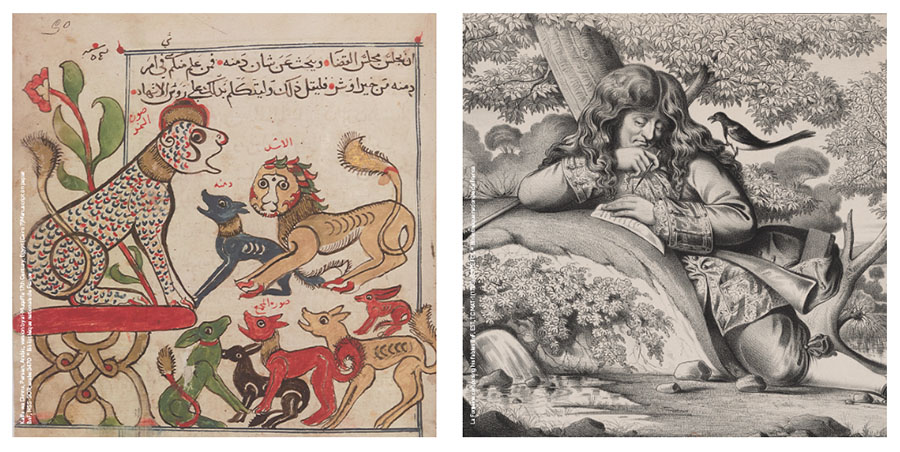
From Kalila wa Dimna to La Fontaine: Travelling through Fables
Mar 26 — July 21, Louvre Abu Dhabi, UAE —more info
Featuring approximately 133 artworks, including manuscripts, graphic arts, and 3D objects, generously lent from prestigious institutions worldwide, The Louvre Abu Dhabi invites visitors to witness the commonalities between Kalīla wa Dimna and La Fontaine.
The works trace the fascinating evolution of these fables. They originated in India and Greece, then evolved through influential figures such as Ibn al-Muqaffa’ and Aesop, reaching their pinnacle with French fabulist Jean de La Fontaine in the 17th century.
This is an exhibition you won’t want to miss.
Louder than Bombs: Songs for Our People by Lubana Al-Quntar
Mar 28 —Arab American National Museum, US —more info
Coinciding with the start of the Muslim fasting month of Ramadan, the Arab American National Museum in the US is putting on a mesmerizing concert featuring the Arab American Choir alongside the AMNM’s artist-in-residence, Syrian opera singer Lubana Al-Quntar. Following the concert, there will be a community iftar.
Samia Henni: Performing Colonial Toxicity
Ongoing— April 16, The Mosaic Rooms, London— more info
Most readers will be aware of the disastrous effects of nuclear testing on humans and wildlife in the Pacific — by the Americans on Bikini Atoll, by the British on Christmas Island, to name just two. Far fewer know about similar devastating actions by the French in the Arab Maghreb. A new exposition in London offers a timely corrective.
The secret history of France’s nuclear and weapons testing in Algeria is uncovered in the touring exhibition Performing Colonial Toxicity by architectural historian and exhibition maker Samia Henni.
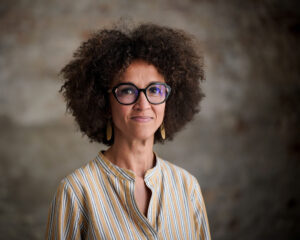
In February 1960, the first of France’s 17 atomic bombs were detonated in the Reggane district of the Algerian Sahara, approximately 1,000 miles south of Algiers. The timing of France’s nuclear program in the desert was significant. Six years previously in 1954 the Algerian War of Independence broke out against the French. In the late 1950s, oil had also been discovered in Algeria. Paradoxically, Algeria’s strategic and economic value to France rose just as the vast territory was slipping from the colonial power’s grasp. Or so it seemed.
As Henni points out in “Jerboasite: Naming French Radioactive Matter in the Sahara,” by 1966, four years into Algeria’s independence from colonial rule, France “exploded four atmospheric and thirteen underground nuclear bombs in the Algerian Sahara.” The radioactive fallout from the other nuclear weapons tests France conducted “[caused] irreversible contamination across Algeria, Central and West Africa, and the Mediterranean (including southern Europe).”
To this day, France’s nuclear weapons program in the Algerian Sahara remains a civil and military secret. The French government archives pertaining to the production, planning and conducting of nuclear weapons tests are classified and beyond the reach of the public.
Henni again, “This imposed amnesia not only encumbers the writing of France’s atomic histories in the Algerian Sahara, but also prevents victims, veterans, and civil groups from claiming the socio-economic, psychological, spatial, and health compensations and recognitions that should be accorded to them according to protocols of international law.”
Performing Colonial Toxicity features maps, photographs, film stills, documents, and interviews that Hanni herself has conducted, alongside hard to get testimonies. Some were from Algerians in the Sahara who worked at either the atomic base in Reggane or in Ekker, or from their extended families and communities. Also included are eyewitness accounts by French military and civilian personnel, who were stationed in two French bases in Algeria. The audio-visual exhibition has been arranged in what Henni calls “stations.”
It was the culmination of Henni’s two-year research project commissioned for the If I Can’t Dance Edition IX — Bodies and Technologies (2022-23) biennial program. Megan Hoetger, who curated Performing Colonial Toxcity for Framer Framed in Amsterdam, describes the exhibition as “part oral history and part investigative journalism.”
Henni was born in Algiers. Her exhibitions have focused on those built, destroyed, and imagined environments that were produced by colonization. They have covered diverse yet related topics such as forced displacement, nuclear weapons, resource extraction and warfare. Henni is the author of Architecture of Counterrevolution: The French Army in Northern Algeria (gta Verlag, 2017, 2022) and Colonial Toxicity: Rehearsing French Radioactive Architecture and Landscape in the Sahara (If I Can’t Dance, I Don’t Want To Be Part Of Your Revolution, Framer Framed, 2023). She also edited War Zones, gta papers no. 2 (gta Verlag, 2018) and Deserts Are Not Empty (Columbia Books on Architecture and the City, 2022). Presently she is the invited visiting professor for 2023-2024, at the Institute for the History and Theory of Architecture (gta), ETH Zürich.
While the rest of the world might be unfamiliar with this past, the secret history of French nuclear tests in the Algerian Sahara has long been a topic of investigation for Algerian artists. Ammar Bouras told TMR’s Pierre Daum about an artwork he made after he went to the Hoggar massif, where the French tested a nuclear bomb two months before Algeria’s independence in 1962. There was a secret clause in the accords that finally granted the North African country its independence; France was allowed to carry on testing its nuclear tests on Algerian soil until 1966.
More than sixty years later the consequences of ruined habitats and wasted lives linger. Today, thankfully, there is a global awareness of the cost of environmental degradation. What Henni achieves in Performing Colonial Toxicity, now in London after four successful months in the Netherlands, is to give names and faces to specific individuals who have been neglected for too long. And by viscerally revealing the effects of power machinations of pernicious colonialism, perhaps she has also fired the first salvo in a battle for restorative justice for Algeria.
— Malu Halasa
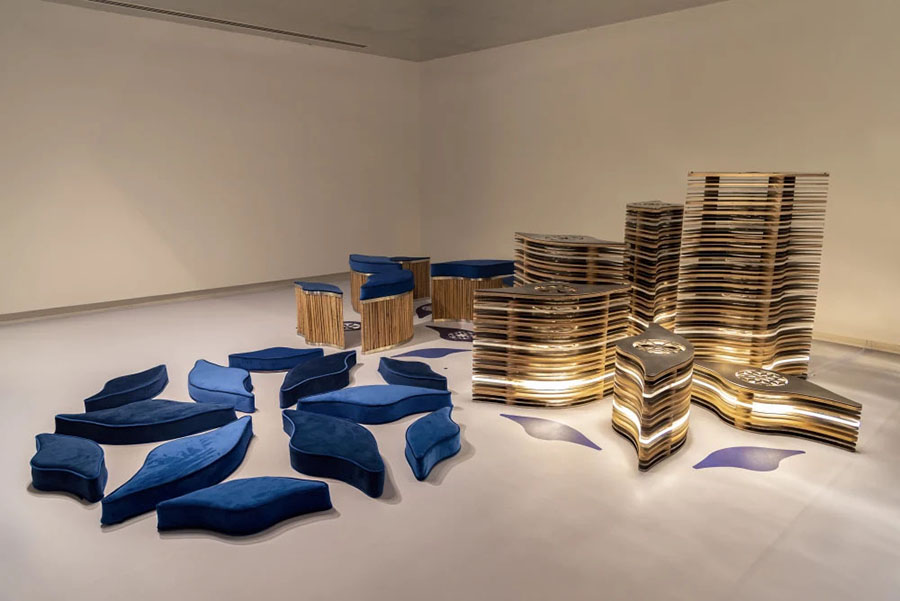
Azza’s Desert
Ongoing —Apr 28 — Dubai, UAE —more info
We’ve been keeping an eye on the meteoric rise of Emirati Jewellery artist, product designer and sculptor Azza Al Qubaisi whose latest organic form sculpture resides in the Sculpture Garden of the recently inaugurated Bassam Freiha Art Foundation in Abu Dhabi, UAE. Her use of rusted iron stands in stark contrast to the foundation’s contemporary finishes, interweaving the old with the new, the natural with the urban. “Using materials that draw from the earth’s palette is inspired by the deep roots of my heritage,” the artist remarks.
“Azza’s Desert” at the Khawla Art Gallery resembles the artist’s inspiration as an Emirati artist who is influenced by her surrounding environment from the oasis and its palm trees and how magnificent they are visually with their own patterns, to the falconry which is a very old traditional hobby and how she got inspired by the falcons and houbaras birds in her beautiful abstract artworks, moving to between the dunes and how she depicts the movement of the sand in a very graceful way.
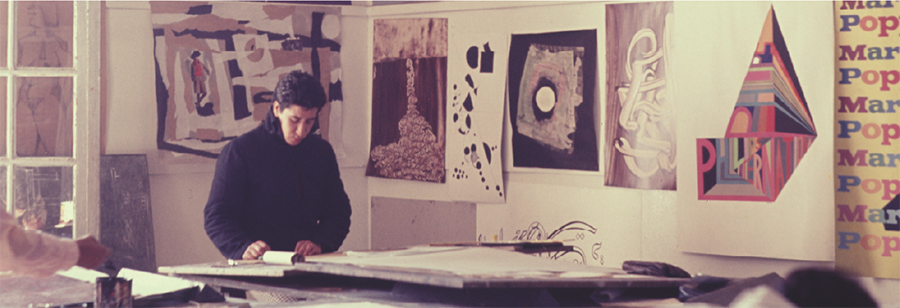
The Casablanca Art School: Platforms And Patterns For A Postcolonial Avant-Garde (1962–1987)
Ongoing — June 16 — Sharjah, UAE —more info
In the exhilaration following Moroccan independence in 1956, staff and students at the Casablanca Art School (CAS) fomented an artistic revolution. They integrated abstract art with African and Amazigh traditions, taking inspiration from the region’s rugs, jewellery, calligraphy and painted ceilings. Declaring a new art for Morocco grown from Afro-Amazigh heritage, they created a cultural uprising that spread into the future.
This exhibition running at Al Hamriyah Studios and Old Al Diwan Al Amiri in Sharjah, UAE explores the distinct vision of a Morocco in the wake of its independence in 1956 driven by five influential artists and teachers from the Casablanca Art School: Farid Belkahia, Mohammed Chabâa, Bert Flint, Toni (Antonella) Maraini and Mohamed Melehi. The exhibiton makes its way to Sharjah after a showing at Tate St Ives in collaboration with the Sharjah Art Foundation.
On view are works created by a constellation (rather than a strict group) of 21 artist-activists, including abstract paintings, urban murals, typography, graphics and interior design as well as rarely seen print archives, vintage journals, photographs and film. The exhibition is curated by Morad Montazami and Madeleine de Colnet for Zamân Books & Curating, with Hoor Al Qasimi, Director of Sharjah Art Foundation, May Alqaydi, Assistant Curator of Sharjah Art Foundation, and associate researchers Fatima-Zahra Lakrissa and Maud Houssais.
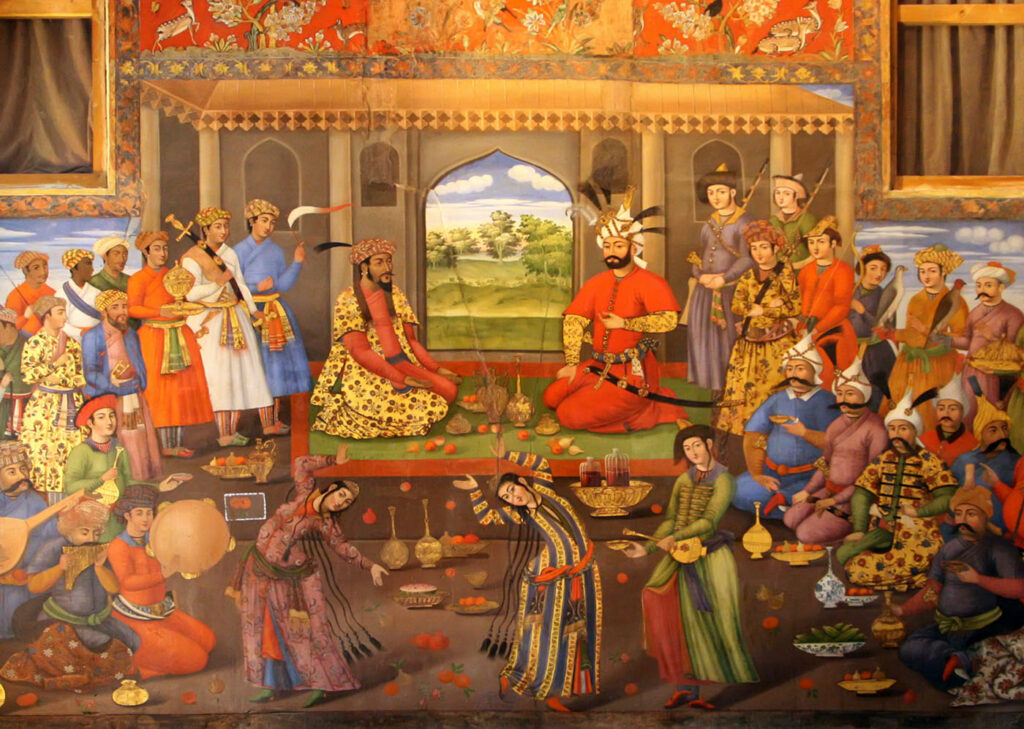
Dining with the Sultan: the Fine Art of Feasting ongoing at the Los angeles County Museum of Art, through August 4, 2024 — more info
We are made hungry by the exhibition Dining with the Sultan: the Fine Art of Feasting, at the Los Angeles County Museum of Art until August 4th, 2024, just as al-Musktafī was by his courtiers’ recitations. In our case, a rumbling stomach is provoked by objects in glass cases, not by poems. Around some of these dances an aura, stemming less from their unreproducible character as from the combination of their sheer antiquity and their eminent breakability. Read our review of the exhibition.
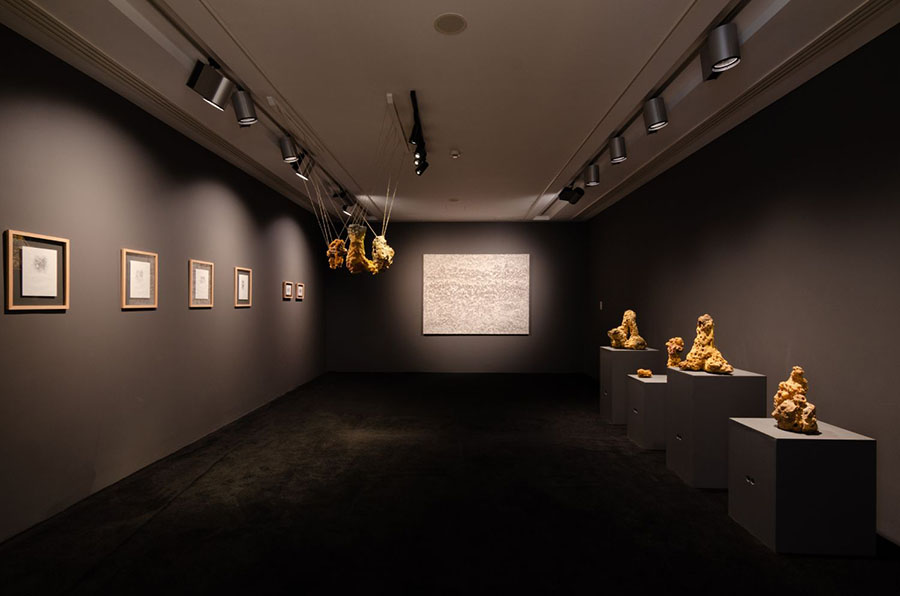
Sympoietic Fabrics by Charbel Samuel Aoun Exhibition
Ongoing — Aug 25, 2024 at the Sursock Museum, Beirut — more info
Sympoietic Fabrics is the first institutional solo exhibition by artist Charbel Samuel Aoun. ‘Sympoietic’ is a term used by Donna Haraway referring to the process of collective creation or making-together and emphasizing the relational and interdependent nature of existence and calls for a new politics of listening to the life unfolding around us.
The exhibition highlights the artist’s unique engagement with processes of co-creation and features new productions that bring to life earth, stones, wood, and wax through motors, amplifiers, and microphones. In addition to installations, paintings, and drawings, the exhibition is complemented by video documentation of Aoun’s previous performances and installations, produced in situ.



